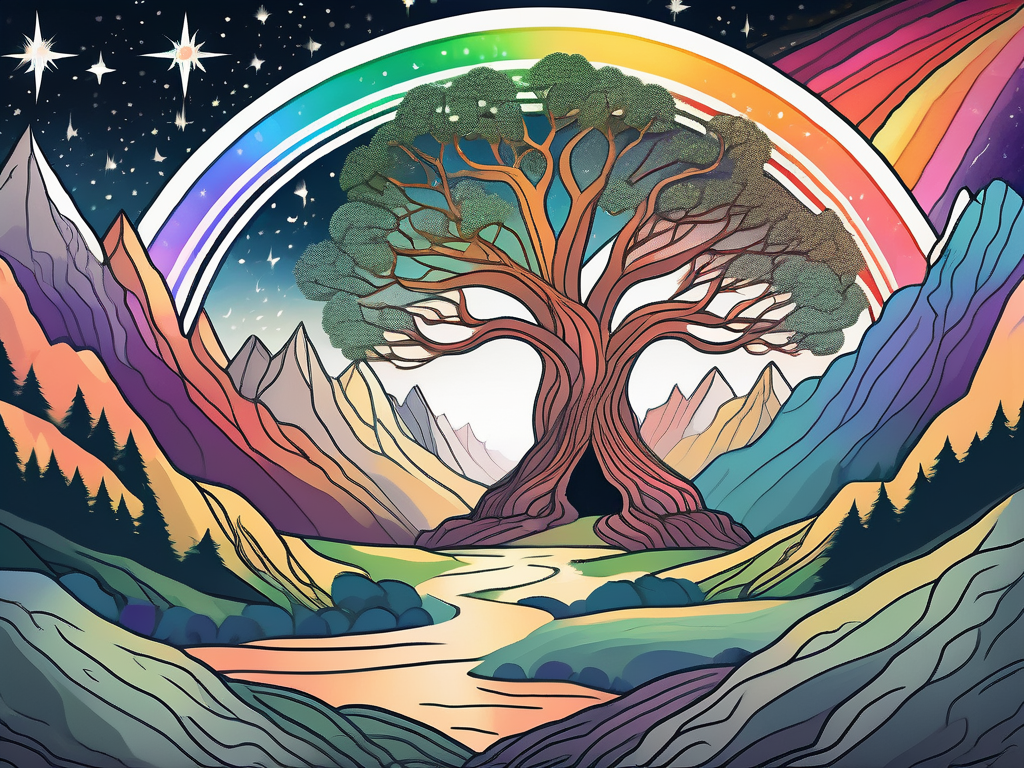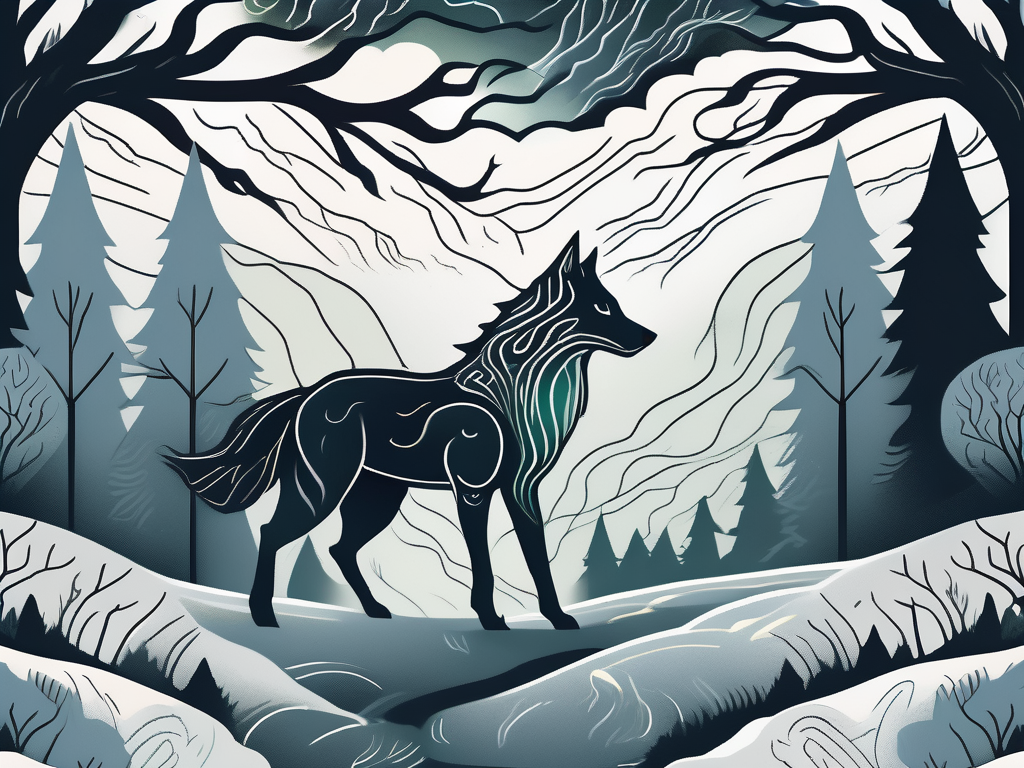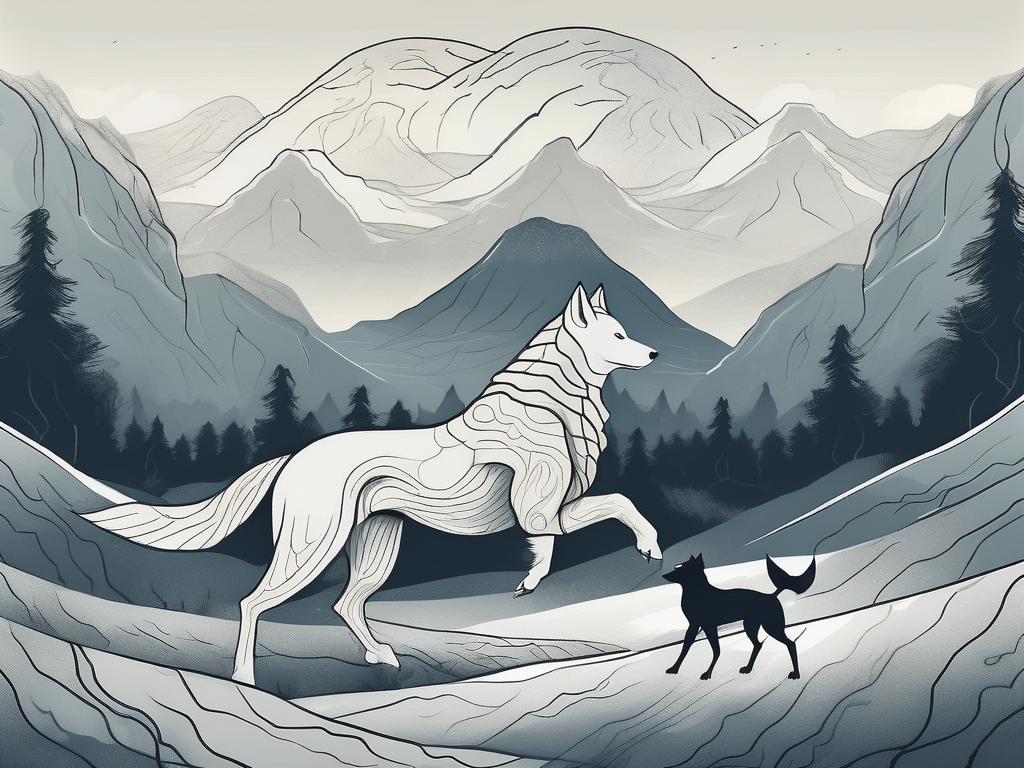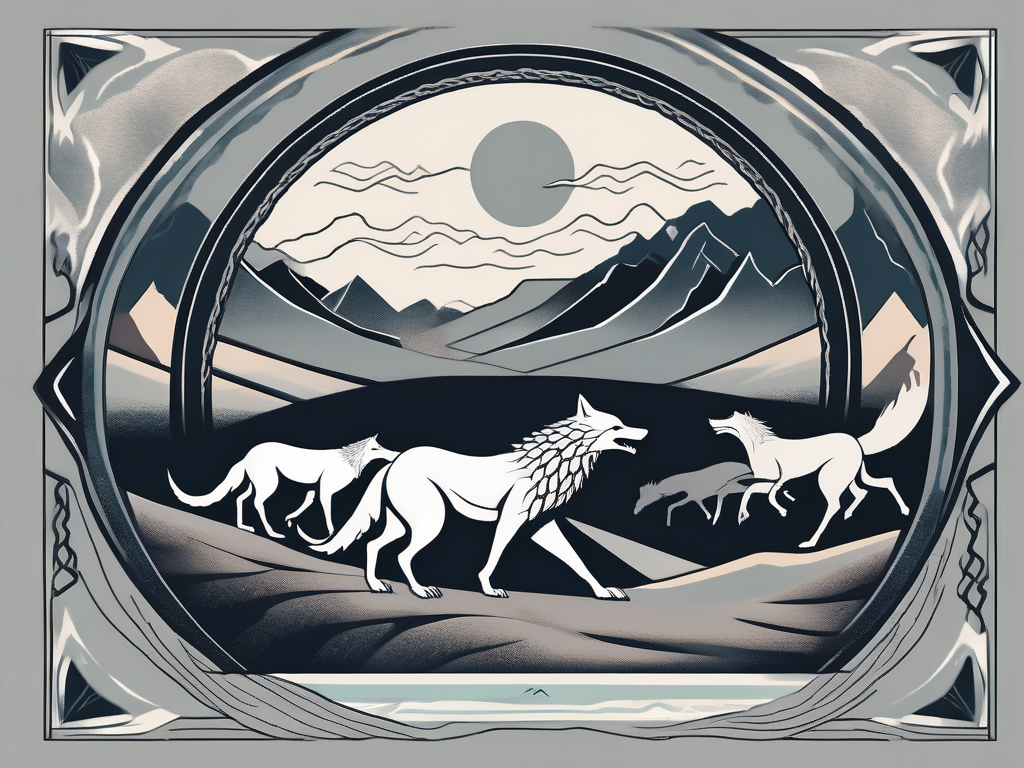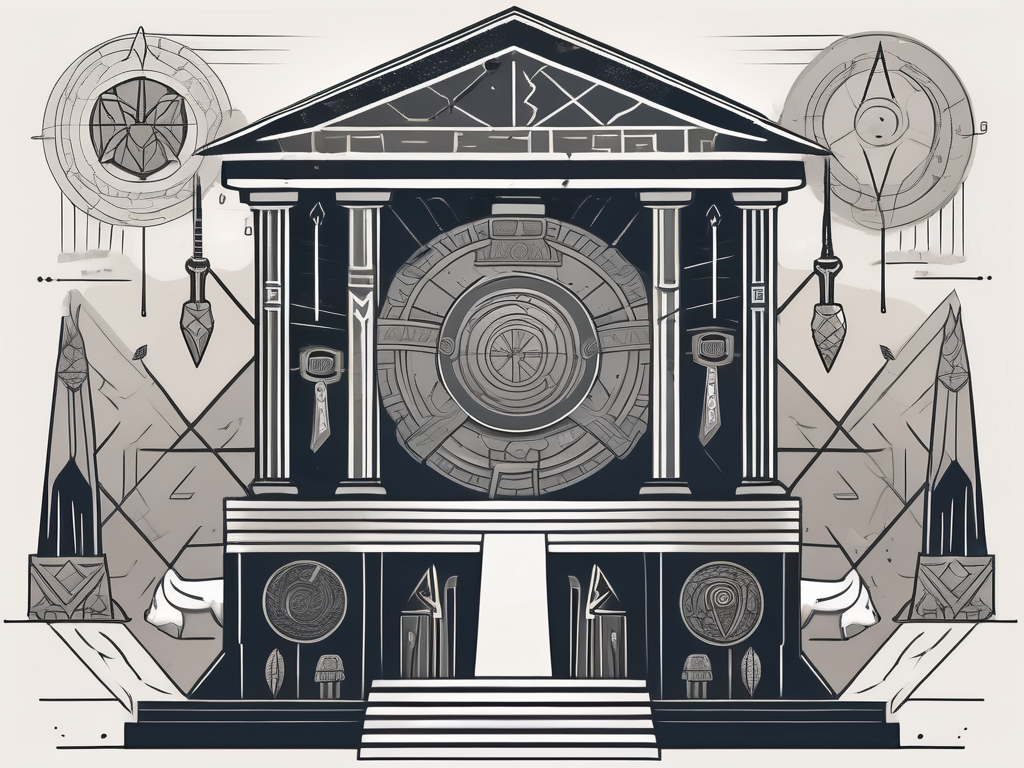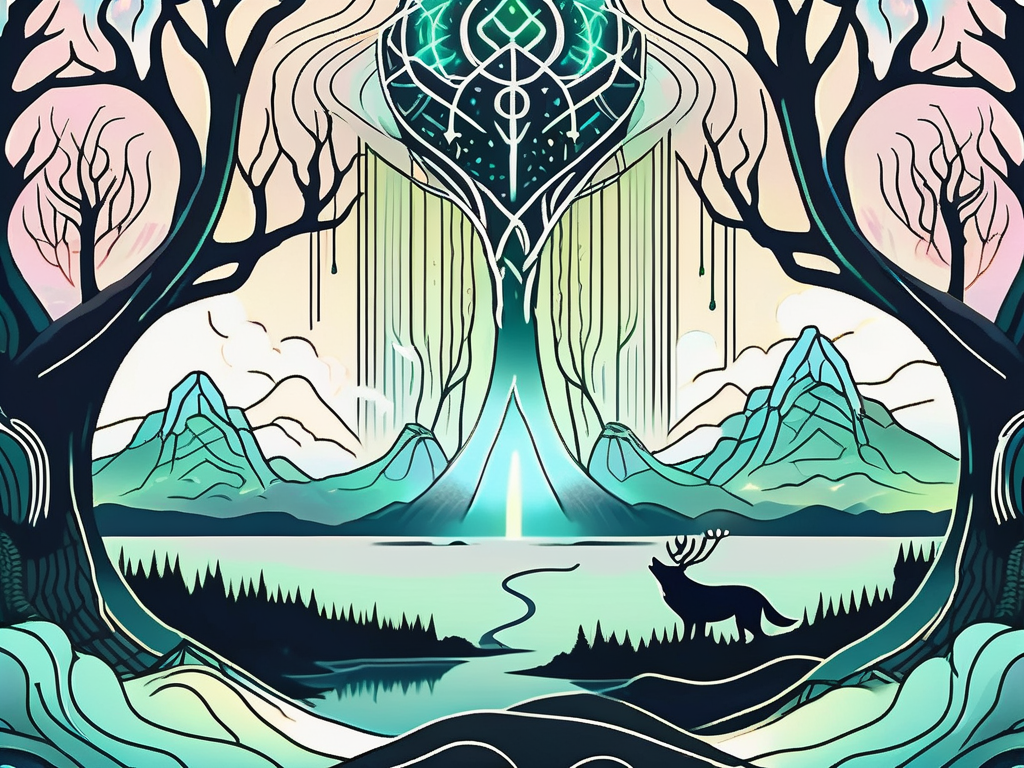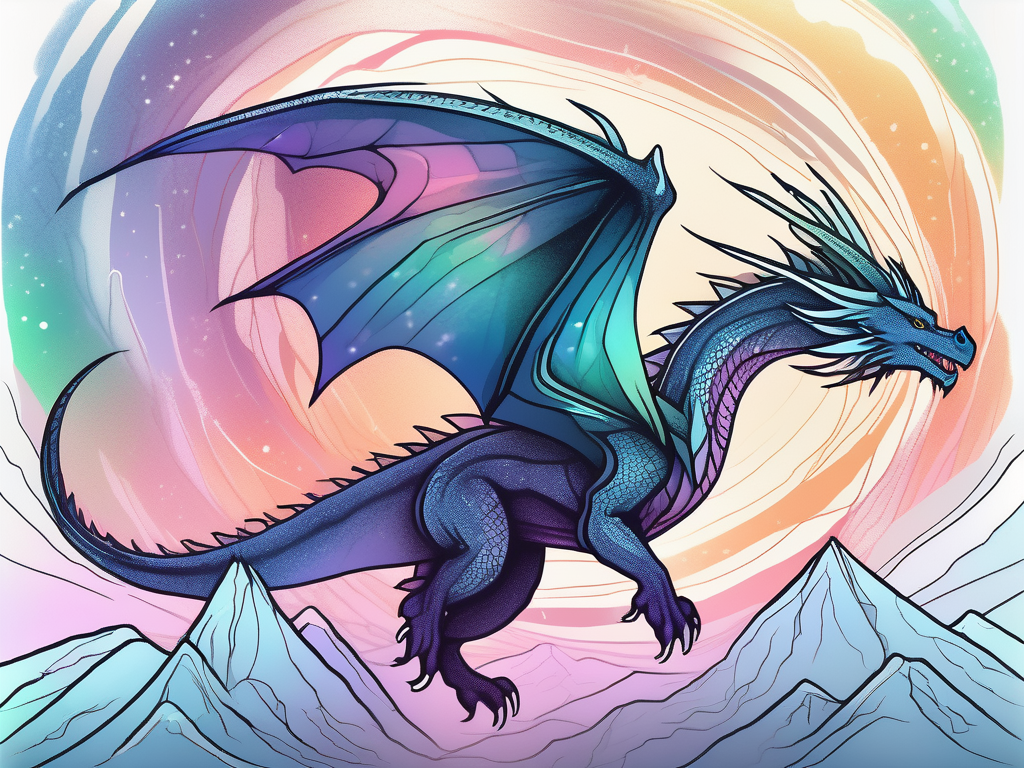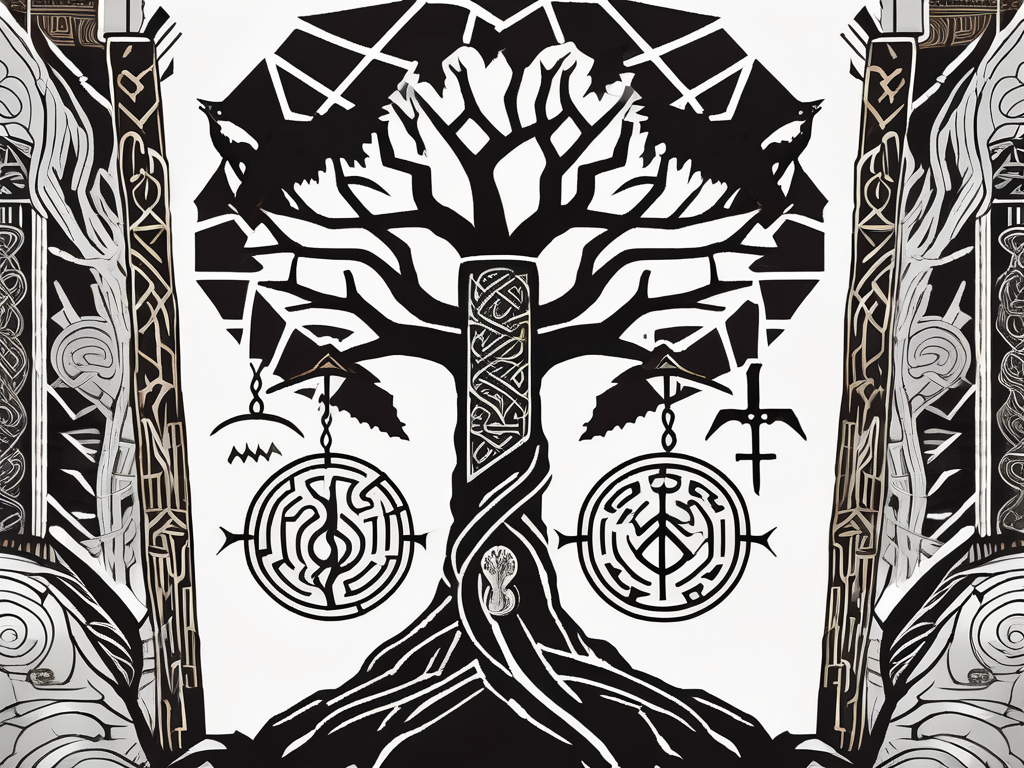Norse mythology is an intricate web of stories, legends, and beliefs that have captivated people for centuries. At the heart of this mythology lies Asgard, the divine home of the Norse gods. Let’s embark on a journey to explore the mysteries and wonders of this mythical abode.
Understanding Norse Mythology
Before delving into Asgard, it’s essential to grasp the significance of Norse mythology in Scandinavian culture. For the people of the Viking Age, these tales served as a way to understand the world around them and their place within it. The stories of gods, heroes, and mythical creatures held valuable lessons about honor, bravery, and the cyclical nature of life.
Norse mythology was not just entertainment; it was deeply intertwined with every aspect of daily life. It influenced everything from religious practices to art, literature, and even the names given to newborn children. The gods and goddesses held a pivotal role in shaping the moral and ethical values of the Viking society.
The Norse pantheon was vast and diverse, with numerous gods and goddesses governing different aspects of the natural and supernatural realms. At the heart of Norse mythology were the powerful deities who commanded respect and awe.
The Main Deities in Norse Mythology
Odin, the Allfather, was the supreme god and ruler of Asgard, the realm of the gods. He presided over wisdom, war, and death, and was known for his insatiable thirst for knowledge. Odin’s iconic attribute was his one eye, which he sacrificed in exchange for wisdom from the Well of Urd.
Thor, the mighty god of thunder, was one of the most beloved and revered gods in Norse mythology. He was the protector of Midgard, the realm of humans, and defended them against the forces of chaos and destruction. Thor wielded the mighty hammer Mjolnir, which he used to summon thunder and lightning.
Freya, the goddess of love and beauty, was a captivating figure who charmed all with her grace and allure. She was associated with fertility, desire, and the art of seidr, a form of magic. Freya was also a leader of the Valkyries, the divine female warriors who chose the fallen heroes to join Odin in Valhalla.
These are just a few examples of the main deities in Norse mythology. Each god and goddess had their own unique qualities, roles, and stories that added depth and complexity to the rich tapestry of Norse mythology.
The Divine Home: Asgard
Asgard, a celestial realm beyond mortal understanding, was the dwelling place of the gods and goddesses. This realm, located high above the nine realms of Norse cosmology, was a magnificent sight to behold.
As you step into Asgard, you are immediately greeted by a breathtaking sight. The realm is a symphony of architectural marvels, with grand halls and ethereal palaces stretching as far as the eye can see. The structures seem to defy the laws of physics, their intricate designs appearing both ancient and futuristic at the same time.
One of the most awe-inspiring features of Asgard is Gladsheim, the hall of the gods. This majestic structure stands at the heart of the realm, its towering spires reaching towards the heavens. Inside Gladsheim, the gods convene in council, discussing matters of great importance and making decisions that shape the fate of the cosmos.
But it is not just the gods who reside in Asgard. Valaskjalf, the home of Odin, stands proudly amidst the celestial landscape. This palace is a sight to behold, its walls adorned with intricate carvings that depict the history and mythology of the gods. At the center of Valaskjalf, Odin’s grand throne, Hlidskjalf, sits in all its glory. From this vantage point, Odin can observe the entire cosmos, keeping a watchful eye on the happenings of the nine realms.
As you explore further, you come across shimmering landscapes that seem to exist in a realm of their own. Lush gardens filled with vibrant flowers and majestic trees stretch out before you, their beauty rivaling that of the gods themselves. These landscapes are said to be the creation of Freyja, the goddess of love and beauty, who has a deep connection with the natural world.
The Inhabitants of Asgard
Asgard was not only the residence of the gods but also the gathering place for the spirits of the most courageous warriors. These warriors, known as Einherjar, were chosen to fight alongside the gods during the apocalyptic event known as Ragnarok.
As you walk through the halls of Asgard, you can feel the presence of these mighty warriors. Their spirits linger in the air, their bravery and valor forever etched into the fabric of this divine realm. It is said that the Einherjar spend their days honing their skills in preparation for the final battle of Ragnarok, where they will fight alongside the gods against the forces of chaos and destruction.
But the Einherjar are not the only inhabitants of Asgard. The realm is also home to a myriad of other mythical beings, each with their own unique powers and abilities. From the mischievous Loki, the trickster god, to the fearsome Valkyries, who choose the souls of fallen warriors to join the ranks of the Einherjar, Asgard is a realm teeming with life and magic.
As you delve deeper into the mysteries of Asgard, you realize that this celestial realm is not just a physical place but a manifestation of the collective imagination and beliefs of the Norse people. It is a realm where gods and mortals intertwine, where legends come to life, and where the boundaries between reality and myth blur.
The Nine Realms of Norse Cosmology
Asgard was not an isolated bastion of divinity; it existed in harmony with eight other realms, all connected by the majestic Yggdrasil, the World Tree.
In Norse mythology, the Nine Realms formed a vast cosmic tapestry, each realm with its own unique characteristics and inhabitants. These realms were not separate and independent, but rather intricately interconnected, forming a complex web of existence.
The Connection Between Asgard and Other Realms
Yggdrasil’s roots extended into the other realms, creating a complex network that allowed communication and travel between them. Asgard served as a central hub, linking the divine and mortal realms.
Through the branches of Yggdrasil, the gods and goddesses of Asgard could interact with the various realms, fostering alliances, forging friendships, and sometimes even engaging in epic battles. The realms were not isolated from one another; they were part of a larger cosmic ecosystem.
For example, Midgard, the realm of humans, was connected to Asgard through the Bifrost, a rainbow bridge that allowed the gods to travel between the two realms. This connection symbolized the interdependence between gods and mortals, as the gods relied on human worship and offerings for their sustenance and power.
The Significance of Yggdrasil, the World Tree
Yggdrasil served as a symbol of interconnectedness, reflecting the belief that all things in the universe are inextricably linked. Its branches reached into the heavens, where the realm of the gods resided, while its roots delved deep into the realms of the underworld, where the spirits of the deceased dwelled.
Each realm had its own distinct landscape and inhabitants. For instance, Jotunheim, the realm of the giants, was a land of towering mountains and icy landscapes, inhabited by powerful and often unpredictable beings. Niflheim, the realm of ice and mist, was a frozen wasteland where the primordial being Ymir was said to have been born.
The realms were not static entities; they constantly interacted and influenced one another. The actions of the gods in Asgard could have far-reaching consequences in the other realms, and vice versa. This dynamic interconnectedness created a rich tapestry of myths and legends, where the fates of gods, giants, humans, and other beings were intertwined.
Exploring the Nine Realms of Norse cosmology reveals a complex and vibrant universe, where the divine and mortal realms coexisted and influenced one another. Yggdrasil, the World Tree, stood as a testament to the interconnectedness of all things, reminding us that even in the vastness of the cosmos, everything is connected in a delicate balance.
The Role of Valhalla in Norse Mythology
Valhalla, the legendary hall of fallen warriors, occupies a significant place in Norse mythology and holds the promises of eternal glory and valor.
The Journey of Warriors to Valhalla
Valhalla awaited the fallen warriors chosen by Odin himself. These heroic souls would be escorted to the afterlife by the Valkyries, warrior maidens who selected only the bravest fighters from the battlefield.
The Daily Life in Valhalla
Within the majestic walls of Valhalla, the warriors would spend their days engaging in glorious battles, feasting on an endless supply of mead, and forging unbreakable bonds with their comrades. This eternal existence was the ultimate reward for those who died honorably in battle.
The End of the Divine Home: Ragnarok
But even the celestial realms were not exempt from the clutches of fate. Norse mythology prophesized a cataclysmic event called Ragnarok, the end of all things.
The Prophecy of Ragnarok
Ragnarok foretold a series of natural disasters, conflicts, and battles among the gods and mythical beings. The mighty Thor would wield his hammer against the serpent Jormungandr, while Odin would face off against the monstrous wolf Fenrir.
The Aftermath of Ragnarok
Although Ragnarok represented the end of an era, it was also the birth of a new beginning. From the ashes of the old world, a fresh cycle of creation would emerge, with new gods and a renewed sense of purpose.
As we conclude our exploration of Asgard, it becomes clear that Norse mythology and its stories of divine abodes provide us with a glimpse into the rich tapestry of beliefs and values shared by the ancient Scandinavians. They inspire us to appreciate the interconnectedness of all things and remind us of our place in the ever-changing cosmos.
